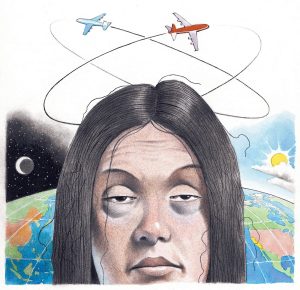The third visa preferential category for employment-based permanent residency in the United States. EB-3 visas are for professionals and skilled workers who failed in their attempt at the EB-1 and EB-2 visa applications. The criteria for the EB-3 visa are less stringent, however, it’s crowded with interested applicants, thus the long backlog of waiting candidates.
Applicants under the EB-3 preference category require a sponsoring U.S employer and do not offer a self-petition option, which of course is unlike the EB-1 category which is tailored made for professionals of extraordinary abilities.
Related Article: EB-1 Visa
Related Article: EB-2 Visa
Related Article: 5 Exceptional Cabins To Rent In Upstate New York

Criteria for EB-3 Visa Eligibility
Applicants looking to access permanent residency under the EB-3 status have the luxury of choosing from 3 subcategories: EB-3A, Professionals; EB-3B, Skilled workers; and EB-3C, Other workers. All 3 subcategories requires:
- Labor certification
- a permanent full-time job offer
- the applicant has to show that they will be performing work in which qualified personnel are in short supply in the United States
Individual requirements for all 3 subcategories
EB-3A, Professionals – the applicant is mandated to have a foreign degree equivalent of a United States baccalaureate degree. It must be demonstrated that a degree is the regular requirement to gain job placement. For this subcategory, a baccalaureate degree cannot be replaced by other forms of education and experience. It is mandatory.

EB-3B, Skilled workers – applicants vying for this subcategory have to show that they possess 2 years’ worth of job experience or training.
EB-3C, Other workers – The applicant must be willing to accept the full-time job offered by a United States employer when the petition is being filed (by the U.S employer). The candidate must be ready to perform tasks related to unskilled labor which are not temporary or seasonal in nature. The job specifications demand qualified workers who are not available in the U.S. The EB-3C subcategory, requires less than 2 years training or experience as part of the criteria to be eligible for this visa.
EB-3 Visa Quota System
The Department of State is in charge of placing FY-2012 numerical limit, which translates to the worldwide cap placed on employment-based preference that individuals the world over can get in trying to become permanent residents of the U.S, based on the eligibility criteria for this category. This has been the case since September 2012.

The worldwide limit of professionals that can get into the United States under the EB-3 category is capped at 144,951, with a limit per country placed at 7% (of worldwide cap). This of course is irrespective of the country’s population, painting a clearer picture as to why there is a huge backlog of applicants from India and China.
Worth stating here, is the fact that there is a 28.6% limit of worldwide level reserved for recipients of EB-3 visas. Slots available from EB-1 and EB-2 categories spills over to be taken advantage of by applicants seeking to get EB-3 status. However, not more than 10,000 spillover slots are awarded to the other workers subcategory in EB-3.

EB-3 Application Process
Applying for an EB-3 visa starts by securing a labor certification, which of course requires the submission of an ETA form 9089. No guarantee of employment is necessary when the labor certification is being filed. However, the promise of a future job offer is sufficient. It is worth mentioning that labor certification needs to be submitted with the actual application, the form I-140 (petition for alien worker), which eventually is sufficient to confirm the applicant’s visa.
Application Timeline
The application for EB-3 is lengthy and its processing time takes a while. Usually, most applicants get more work experience or acquire higher education making them eligible for an upgrade to apply for an EB-2 visa.

Cost Associated With The EB-3 Visa Application
The application processing fee for employment-based immigrant visas collected by the Department of State as of February 2016 is US$345. The form I-140 (immigrant petition for alien worker) fee collected by USCIS is US$700. Other costs that have to be factored in include medical examination, plus over extras which might not be applicable such as, mandated vaccinations; translations; securing supporting documents with their associated fees (documents such as passport, police certificates, birth certificates etc)
The EB-1, EB-2 and EB-3 are all visa categories that confers permanent residency to professionals in the United States with the easiest way possible to get a green card. However, they are all designed for different levels of professionals. Even though they all offer the same thing, they cannot all be accessed by just any worker. Be sure to check out the requirement for each category before you choose to apply for anyone of them.











